Introduction to 925 Stamp on Jewelry
When you stumble upon a piece of jewelry adorned with a ‘925 Stamp on Jewelry,’ it’s like discovering a secret handshake among enthusiasts. This stamp signifies that the item is made of sterling silver, which is an exquisite blend of 92.5% silver and 7.5% other metals, typically copper. Having dabbled in the world of jewelry for years, I can tell you that understanding this stamp opens a treasure trove of information about quality and authenticity.
Here’s a quick rundown of what the 925 stamp truly means:
- Quality Assurance: The 925 stamp guarantees that you’re getting a durable and high-quality piece. Sterling silver resists tarnishing better than pure silver.
- Craftsmanship Indicator: Jewelry marked with a 925 stamp often showcases superior craftsmanship, making it a popular choice among artisans and designers.
- Versatility: Sterling silver is versatile, seamlessly complementing any style be it chic, bohemian, or classic.
Next time you’re browsing through a jewelry collection, keep an eye out for that little 925 stamp. It’s not just a mark; it’s a badge of honor for jewelry lovers who appreciate the artistry behind each piece.
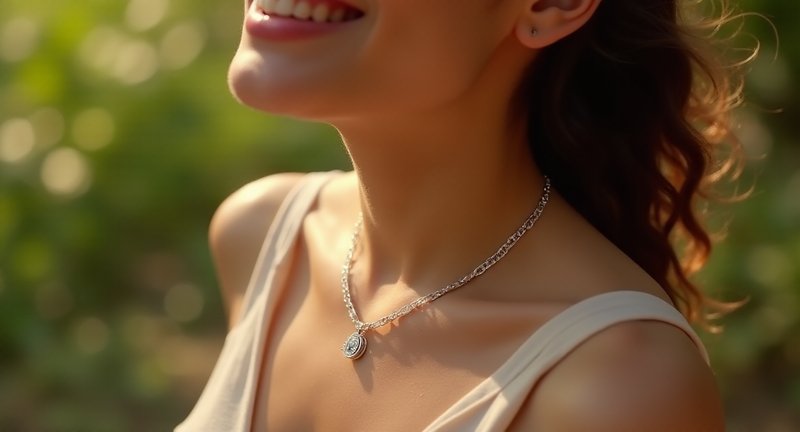
In my experience, investing in items with this stamp means you’re not only buying jewelry; you’re acquiring a piece of history and craftsmanship that can be cherished for generations.
The Significance of the 925 Stamp on Jewelry
Considering silver jewelry, I often find myself drawn to pieces adorned with a specific mark that whispers of quality and authenticity. This little symbol, often hidden but always present, represents a minimum silver content of 92.5%. Here’s why this mark matters in the world of adornments:
-
Quality Assurance: The presence of this mark is a testament to the jewelry’s authenticity. It ensures that the piece is primarily crafted from silver, making it more durable and less prone to tarnishing.
-
Value Recognition: Jewelry with this mark generally retains its value better than lower-grade alternatives. It’s a badge of honor for artisans, signaling their commitment to excellence.
-
Versatility in Design: Silver adorned with this hallmark can take on myriad forms, from intricate vintage pieces to modern minimalist designs. I love how it complements a variety of outfits, adding a touch of elegance without overwhelming the overall look.
-
Skin-Friendly Option: For those with sensitivities, knowing your jewelry is primarily silver can be a relief. This mark is often an indicator that the piece is less likely to cause skin irritations compared to cheaper metals.
In my personal collection, I’ve found that pieces bearing this mark stand the test of time not just in quality, but in sentiment as well. Whether it’s a gift or a self-purchase, knowing that my jewelry carries this hallmark makes each piece feel even more special.
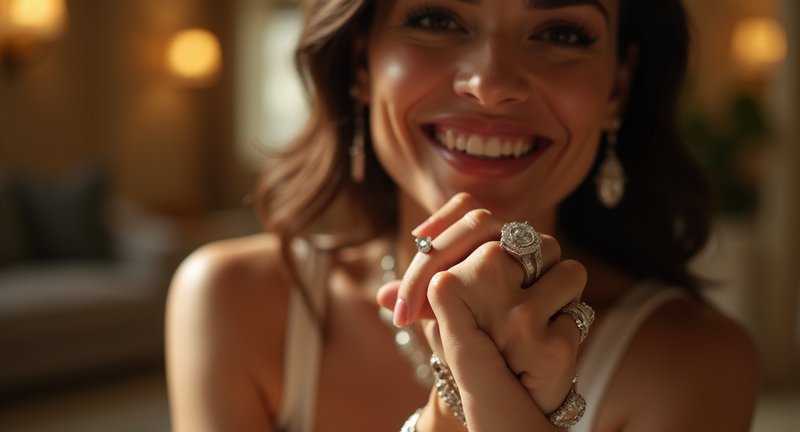
So, the next time you browse for jewelry, keep an eye out for this emblem. It’s a small detail that packs a punch when it comes to significance and style.
Understanding the 925 Mark on Precious Metal
When diving into the point of precious metals, I’ve often encountered the mystique surrounding that little mark indicating quality specifically, the hallmark of 92.5% pure silver, often called sterling silver. Understanding this hallmark can be a delightful journey, revealing the intricacies of metalwork and artistry.
So, why is this mark significant? Let me break it down for you:
-
Purity Indicator: This mark signifies that the metal contains 92.5% silver, with the remaining 7.5% typically consisting of other metals like copper. This combination not only strengthens the silver but also enhances its durability.
-
Quality Assurance: Jewelry bearing this mark adheres to strict quality standards, ensuring you receive a product that’s both beautiful and resilient.
-
Craftsmanship Connection: Each piece with this hallmark tells a story of skilled artisans who meld tradition with innovation. When I wear a piece marked with this symbol, I feel a connection to those craftsmen.
-
Resale Value: Should you ever wish to part with your beloved jewelry, items marked with this hallmark often hold better resale value, thanks to their recognized quality.
When shopping for jewelry, keep an eye out for this hallmark. It’s not just a number; it represents a commitment to quality. Wearing something adorned with this mark feels like carrying a piece of history, doesn’t it?
Also, understanding this mark enriches your appreciation for jewelry. So, the next time you spot that 92.5, know that you’re engaging with a time-honored tradition.
The Importance of Metal Stamps in Jewelry
When it comes to jewelry, those tiny metal stamps hold stories of their own. From personal experience, I can tell you that these markings are like a secret handshake between the jeweler and the wearer, whispering tales of authenticity and quality.
Each stamp serves as a promise, a commitment to the material’s integrity. They ensure that what you’re wearing isn’t just a pretty facade, but rather a piece crafted with care and precision.
Imagine wearing a ring or necklace, knowing it carries the weight of craftsmanship behind it. That little mark tells the world that this isn’t just any trinket; it’s a testament to artistry and dedication.
I’ve often found that a simple glance at these stamps sparks curiosity. They invite you to ascertain the origins of the piece, prompting questions about the maker’s journey and the materials used.
In an age where mass production reigns supreme, these stamps stand as beacons of individuality. They remind us to cherish unique pieces that resonate with our personal stories.
So, the next time you admire a beautiful piece of jewelry, take a moment to appreciate that little stamp. It’s not just a mark; it’s a celebration of the passion and creativity poured into every detail.
What Does 925 Indicate About Silver Quality?
When diving into the point of silver jewelry, one often encounters a curious number: 925. But what does it really tell us about the quality of silver? From my own adventures in fashion, I’ve come to appreciate this little detail, as it signifies a standard that assures both durability and beauty.
Here’s what you need to know:
-
Composition Clarity: The number 925 indicates that the piece is made from 92.5% pure silver. The remaining 7.5% is typically composed of other metals, often copper. This blend enhances strength while maintaining the silver’s shimmering allure.
-
Durability Meets Elegance: Pure silver, while lovely, can be soft and prone to scratches and dents. The addition of other metals makes the piece more resilient perfect for everyday wear or those spontaneous dance parties.
-
Tarnish Awareness: Though 925 silver is less likely to tarnish than pure silver, it can still develop a patina over time. Regular polishing with a soft cloth can keep your treasures gleaming and looking fresh.
-
Authenticity Assurance: When shopping, a hallmark with the 925 designation can help you distinguish genuine silver from its less noble counterparts, like silver-plated items or low-quality alloys.
-
A Touch of History: This standard isn’t just modern; it has roots in ancient practices, reflecting a long-standing tradition of valuing quality in craftsmanship.
So, the next time you admire a piece of silver jewelry, remember that the 925 mark is more than just a number; it’s a badge of honor, indicating quality and care in every glimmering detail.
How the 925 Stamp Ensures Authenticity
When dealing with discerning authentic silver, the hallmark stamped into your piece can be a game-changer. I’ve spent countless hours exploring the intricate world of silver craftsmanship, and I can tell you that the presence of a particular mark serves as a beacon of trustworthiness. Here’s why that tiny engraving matters more than you might think.
The Importance of the Hallmark:
- Authenticity Assurance: That stamp guarantees that you’re getting sterling silver, a blend that contains 92.5% pure silver, ensuring quality over imitation.
- Market Value: Pieces with a reputable mark often retain or increase in value, making them not just adornments, but wise investments.
- Craftsmanship Recognition: Recognizing the hallmark can lead you to a particular artisan or brand, allowing you to explore their other creations.
Now, let’s dig deeper into what this means for you. Ever walked into a store, eyes sparkling at the prospect of a beautiful piece, only to question its authenticity? I’ve been there, too. It’s frustrating to think you might be duped by a shiny facade. Knowing that hallmark is your shield against such disappointments.
What to Look For:
- Location: The stamp is usually found on the clasp or inner band. Familiarizing yourself with typical placements can save you from a letdown.
- Clarity: A clear and legible mark is crucial. If it’s faded or misshapen, you might want to reconsider that purchase.
Moreover, always keep an eye out for that assurance mark; it’s more than just a stamp. It’s your ticket to confidence and authenticity in your silver treasures.
Common Misconceptions About Silver Stamps
With regard to silver stamps, there’s a web of misunderstandings that can baffle even the most seasoned jewelry enthusiasts. Many believe that a shiny stamp on a piece guarantees its quality. But trust me, that glimmer might not reflect the true story beneath the surface.
Some folks think that all stamped silver is created equal. In my experience, the presence of a stamp doesn’t always mean the metal is pure or even ethically sourced. There’s a difference between a mere mark and a promise of authenticity.
Another common myth is that a stamp can never fade or wear away. I’ve seen lovely pieces lose their luster over time. This reality check often surprises those who assume that stamped jewelry is forever marked.
Let’s talk about the idea that if it’s stamped, it’s valuable. Oh, how I wish it were that simple! While a stamp can indicate quality, it doesn’t automatically translate to a high price tag. I’ve stumbled upon stunning unmarked pieces that stole my heart, proving that beauty often lies in the unexpected.
Also, some believe that only high-end jewelers can produce quality stamped silver. I’ve found treasure in local artisans’ creations, where passion and craft outshine any mass-produced item. Always keep an open mind when exploring the world of silver stamps sometimes the best finds are hidden in plain sight.
Comparing 925 Silver to Other Silver Types
When diving into the world of silver, it’s easy to get lost in the sea of options. Let’s explore how that shiny piece marked with a specific silver purity stands up against other contenders.
In my experience, the charm of this particular silver lies in its blend of beauty and durability. It strikes a balance that many other silver varieties can’t quite achieve, making it a go-to for jewelry lovers everywhere.
Now, let’s talk about sterling silver. While it shares some similarities, it can sometimes feel like the less adventurous cousin. Though it boasts a 92.5% silver content, it often comes with added copper, which can tarnish and require more upkeep.
Then there’s the tantalizing allure of fine silver. Pure and unblemished, it shines brilliantly. However, I find its softness can be a bit limiting; it’s not the best choice for intricate designs that need a little more muscle.
Another interesting contender is argentium silver. This innovative twist on the traditional formula includes germanium, which offers enhanced tarnish resistance. Personally, I love how it combines modernity with that classic silver feel, giving it an edge over its counterparts.
In my jewelry journey, I’ve learned that the right silver type can elevate your piece from ordinary to extraordinary. The nuances in silver types can truly affect not just appearance but also the longevity of your cherished items. So, when choosing your next favorite accessory, consider the subtleties that make one silver type stand out over another.
The History Behind the 925 Mark
When I first encountered the iconic 925 mark, it felt like unearthing a hidden treasure. This little emblem signifies that a piece of jewelry is crafted from sterling silver, an alloy that has captivated artisans for centuries.
The roots of this mark trace back to ancient Rome, where silver purity was essential. Over time, the standard evolved, and by the 12th century, the 925 standard emerged, indicating 92.5% silver and 7.5% other metals, often copper.
It’s fascinating to think about the journey these pieces take through history. Each mark tells a story, reflecting craftsmanship and the enduring quest for quality. When I wear jewelry bearing this hallmark, it feels like I’m connecting to generations of makers.
Sterling silver isn’t just about the glint; it’s a canvas for artistry. Each item bearing the mark has the potential to evoke memories, emotions, and style that transcend trends.
For anyone who appreciates the artistry behind jewelry, knowing the history of this mark adds depth to the experience. It transforms mere adornment into a narrative that weaves through time, culture, and personal identity.
So, next time you admire a piece with this hallmark, remember it’s not just silver it’s a legacy waiting to be cherished.
Where to Find the 925 Stamp on Jewelry
When diving into the world of jewelry, spotting the hallmark of quality is essential. From my own treasure-hunting adventures, I’ve learned that this tiny mark is like a secret handshake between artisans and buyers.
Typically, you can find this hallmark tucked away in inconspicuous places. It often appears on the inner side of rings or the clasp of necklaces, where it can go unnoticed by the untrained eye. Think of it as a hidden gem an intimate detail that speaks volumes about the piece’s authenticity.
I remember once discovering this mark while inspecting a delicate bracelet. The light caught it just right, revealing that glimmer of reassurance. It felt like a small victory, confirming that I wasn’t just buying a pretty accessory, but an investment steeped in craftsmanship.
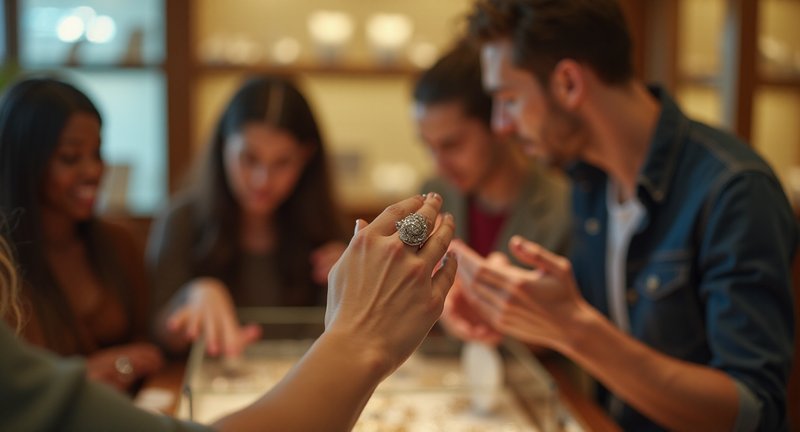
Don’t overlook the earrings, either! Often, this sign of authenticity is nestled on the back of the posts. It’s a comforting reminder that what you’re adorning yourself with is not just beautiful, but also genuine.
Keep your eyes peeled in those nooks and crannies. Jewelry should tell a story, and this mark is an essential part of that narrative. When you finally spot it, there’s an unspoken connection between you and the creator, like a bridge across time and skill.
Next time you browse through a collection, take a moment to appreciate this hidden detail. It’s more than a mere stamp; it’s a testament to quality that elevates the entire experience.
Recognizing Genuine 925 Markings
There’s a little secret among silver enthusiasts that starts with a tiny number: 925. You may have come across it before, the elusive ‘925 Stamp on Jewelry,’ and wondered what that stamp truly means.
From my own journey through markets and vintage stores, I’ve learned that the ‘925’ marking is the ultimate symbol of authenticity for sterling silver. It indicates that the jewelry piece is made of 92.5% pure silver, with the rest being other metals, usually copper. But you wouldn’t believe how often it’s overlooked by those less familiar with the codes.
One of the joys of shopping for fine silver jewelry is the hunt for this mark. Not just any shimmer will do. I’ve found that carefully inspecting for the ‘925 silver hallmark’ adds a sense of discovery, like you’re unearthing a treasure that’s both beautiful and authentic. It’s a moment when the piece tells you its story.
Don’t be fooled by shiny pretenders. Many jewelry pieces out there sparkle just as bright but lack the integrity that comes with genuine sterling silver. Without the ‘Sterling silver authenticity stamp,’ you’re risking an investment in something that might tarnish faster than a quick fashion trend. Trust me, it pays to be picky.
Next time you’re in a jewelry store, take a moment to inspect the clasps and edges of silver pieces. That’s where the 925 marking often hides like a small promise stamped into metal. And once you find it, you’ll know you’re holding something crafted to last.
The Role of Hallmarks in Jewelry Evaluation
When evaluating jewelry, there’s something almost secretive about the marks hidden on its surface. I’ve often found myself peering closely at a ring or pendant, searching for those little symbols. Hallmarks, though small, carry a weight of knowledge, offering clues to the material, craftsmanship, and origin.
They act like a fingerprint, telling a story about the piece’s journey. I’ve seen how these tiny imprints can shift the value of an item dramatically, adding significance and authenticity that might otherwise go unnoticed. It’s fascinating how these markings speak of both history and artistry.
Over the years, I’ve learned that different countries and eras leave distinct hallmarks on their creations. It’s almost like a global treasure map, each symbol revealing where and when the item was crafted. For those of us who love discovering jewelry’s past, these marks open up a world of discovery.
If you’ve ever wondered about the purity of your silver or gold, the hallmark is your guide. I’ve seen many people be pleasantly surprised by the hidden value in their heirloom pieces, all thanks to a barely noticeable stamp. It’s a subtle, yet powerful element in jewelry evaluation, one that shouldn’t be overlooked.
Why 925 Silver is a Popular Choice
Why is 925 silver such a go-to choice? Let me tell you it’s more than just a shiny piece of metal. From my years working in fashion, I’ve noticed 925 silver offers a blend of beauty, durability, and affordability that makes it a wardrobe staple. Whether you’re accessorizing a casual outfit or dressing up for an evening event, silver tends to find its place effortlessly.
One of the things that makes 925 silver stand out is its composition 92.5% pure silver mixed with 7.5% of another metal, usually copper. This combination gives it:
- Strength: Pure silver is too soft to wear every day, but with that 7.5% alloy, it becomes strong enough to withstand daily wear.
- Tarnish Resistance: While it’s not immune to tarnish, this mix slows down the process. Plus, cleaning silver is a breeze with simple household items.
- Hypoallergenic Properties: If you’ve ever experienced irritation from certain metals, 925 silver might be your solution. It’s generally safe for people with sensitive skin, unlike other cheaper options.
But let’s be honest, we also love it because of its versatility. It pairs beautifully with just about anything whether it’s a dainty necklace or a bold statement piece, you can dress it up or down without a second thought. The neutral color palette of silver means it won’t clash with your wardrobe, and its timeless appeal works for any age or occasion.
And have I mentioned the affordability? You get all the benefits of fine jewelry without breaking the bank what’s not to love?
Care Tips for 925 Silver Jewelry
Caring for your silver jewelry is like nurturing a fine wine; it requires attention and a touch of finesse. From my experience, a little effort goes a long way in keeping those stunning pieces looking as bright as the day you first laid eyes on them.
First off, avoid the temptation of tossing your jewelry into a drawer. Instead, keep each piece in a soft pouch or a dedicated jewelry box. This simple habit prevents scratches and tangling, ensuring your treasures remain in pristine condition.
In the matter of cleaning, I swear by a gentle approach. A soft cloth is your best friend here; just a quick buff can work wonders. For deeper cleans, a mixture of mild soap and warm water will do the trick. Soak your jewelry for a few minutes, then gently scrub with a soft brush. Rinse and dry thoroughly it’s a ritual I never skip.
And while I’m a fan of wearing my jewelry daily, it’s crucial to take it off during specific activities. Swimming, showering, and exercising can expose your pieces to harsh chemicals and sweat, which can tarnish their shine. Trust me, it’s worth the hassle to remove them for these occasions.
Also, if your jewelry begins to show signs of tarnish, don’t panic. A specialized silver polish can restore its brilliance. Just remember to follow the instructions carefully; a gentle touch is key.
By incorporating these care tips into your routine, you’ll ensure your silver jewelry remains a radiant expression of your style for years to come.
How to Differentiate Between Real and Fake Silver
When diving into the shimmering world of silver jewelry, it’s easy to feel overwhelmed by the glimmering fakes. I’ve been there, gazing at a piece that sparkles like a star only to discover it’s a mere impostor.
The first clue lies in the weight. Real silver has a certain heft that feels satisfying in your hand. If a piece feels light and insubstantial, it might be a signal that you’re dealing with a counterfeit.
Next, let’s talk about color. Authentic silver exhibits a cool, gleaming shine, while the fake stuff often looks overly bright or even dull over time. Trust your instincts if it looks too good to be true, it probably is.
Another secret I’ve learned is to pay attention to the sound. Real silver produces a softer, more melodic tone when gently tapped. Fakes tend to have a harsher clang that just doesn’t resonate in the same way.
Also, consider the price point. If you stumble upon a deal that seems like a steal, it’s wise to raise an eyebrow. Quality silver doesn’t come cheap; a genuine piece often reflects its craftsmanship and the care taken in its creation.
Remember, investing in silver jewelry is about more than just the purchase; it’s about finding pieces that resonate with your style and spirit. So, take your time, trust your senses, and you’ll soon become a silver sleuth, differentiating between the real deal and the flashy pretenders.
Need-to-Know Information
Is 925 stamped on jewelry worth anything?
Yes, jewelry stamped with ‘925’ indicates that it is made of sterling silver, which is an alloy containing 92.5% silver and 7.5% other metals, usually copper. The presence of this stamp suggests a certain level of quality and craftsmanship, making it generally more valuable than non-silver alternatives. However, the actual worth of 925 jewelry can vary based on factors such as design, brand, condition, and market demand. To determine its worth accurately, it’s advisable to get it appraised by a professional.
Is 925 silver good quality?
Yes, 925 silver, also known as sterling silver, is considered good quality due to its high silver content of 92.5%. This composition provides a good balance between durability and appearance, as pure silver (99.9% silver) is too soft for most jewelry applications. The added metals enhance its strength and help resist tarnishing, making it suitable for everyday wear. While it may require occasional cleaning and maintenance to retain its luster, 925 silver is a popular choice among jewelers and consumers alike for its quality and affordability.
Does 925 mean jewelry is real?
The ‘925’ stamp on jewelry indicates that it is made of sterling silver, which is a genuine silver alloy containing 92.5% silver. This means that jewelry marked with 925 is indeed real in the sense that it contains a significant amount of silver. However, it’s important to note that the presence of this stamp does not guarantee that the item is entirely free from other metals or that it is of high value. Therefore, while the stamp signifies authenticity, it’s essential to evaluate the overall craftsmanship and materials used.
Is s925 real or fake?
The ‘s925’ stamp on jewelry signifies that it is made of sterling silver, with ‘s’ typically indicating ‘silver’ and ‘925’ denoting the silver content of 92.5%. Therefore, s925 jewelry is considered real sterling silver. However, just like with any stamped jewelry, it’s crucial to verify its authenticity. Some counterfeit pieces may also carry this stamp, so it is wise to purchase from reputable sellers or have the item tested for authenticity. Always look for additional signs of quality and craftsmanship to ensure you’re getting genuine s925 silver.
How much should I pay for 925 silver?
The price of 925 silver jewelry can vary widely based on factors like design, brand, weight, and market conditions. On average, you might expect to pay anywhere from $15 to $100 for standard pieces like rings, necklaces, or bracelets. For designer or intricately crafted items, prices can exceed several hundred dollars. It’s important to shop around and compare prices from various retailers, keeping an eye out for sales or discounts. Additionally, consider the craftsmanship and unique features of each piece when evaluating its price.
Why is 925 silver so cheap?
925 silver, or sterling silver, can often be more affordable compared to higher-quality metals like gold or platinum. This is primarily due to the market value of silver being lower than that of precious metals like gold. Additionally, the manufacturing processes for 925 silver jewelry can be more streamlined and cost-effective, contributing to lower prices. However, while it may be cheaper, the quality of sterling silver jewelry remains high, offering a beautiful and durable option for consumers who appreciate fine jewelry without the hefty price tag.
How to tell 925 silver is real?
To determine if 925 silver is real, you can look for the ‘925’ stamp on the piece, indicating it is sterling silver. Additionally, performing a magnet test can be useful, as silver is not magnetic. If a magnet sticks to the jewelry, it may contain other metals. You can also conduct a vinegar test: apply a few drops of vinegar on the surface; real silver should not change color. Also, consulting a professional jeweler can provide the most accurate assessment of the authenticity of the silver.
Does 925 silver have resale value?
Yes, 925 silver jewelry typically has some resale value, as sterling silver is a sought-after material. The resale price can depend on several factors, including the item’s condition, design, brand, and current market prices for silver. While you may not recoup the full retail price, especially for fashion pieces, vintage or designer items may sell for higher amounts due to their unique attributes. To maximize resale value, consider having your jewelry appraised and selling it through reputable platforms or stores specializing in precious metals.
Do they put real diamonds in 925 silver?
Yes, it is possible to find jewelry made of 925 silver that contains real diamonds. Many jewelers use sterling silver as a base metal for setting high-quality diamonds due to its affordability and durability. However, it’s crucial to verify the authenticity of both the silver and the diamonds, as some pieces may feature synthetic or imitation stones instead. When purchasing diamond jewelry set in 925 silver, inquire about certification for the diamonds and ensure that the jeweler is reputable to guarantee you’re getting genuine stones.



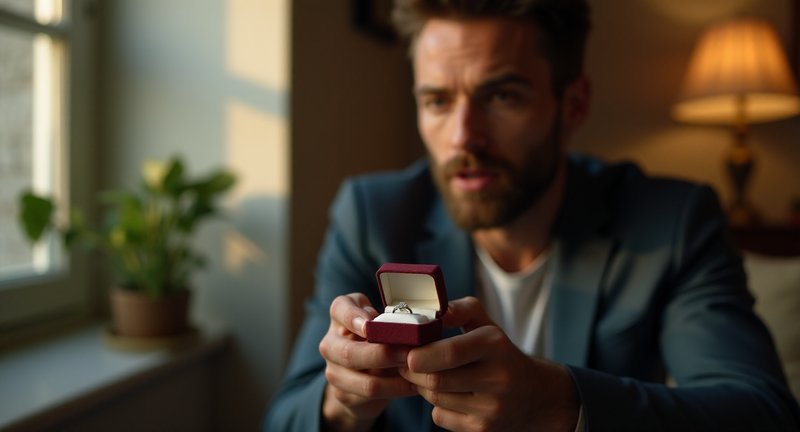
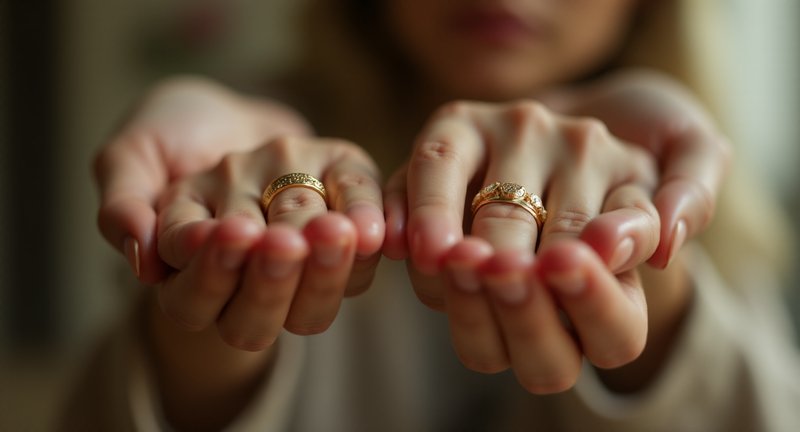



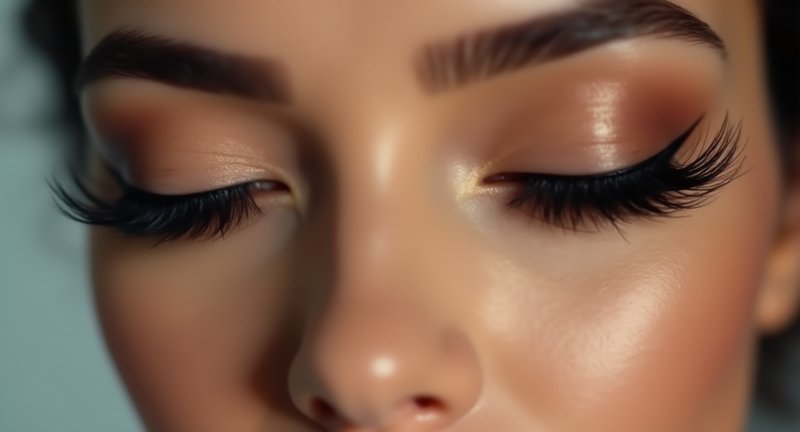

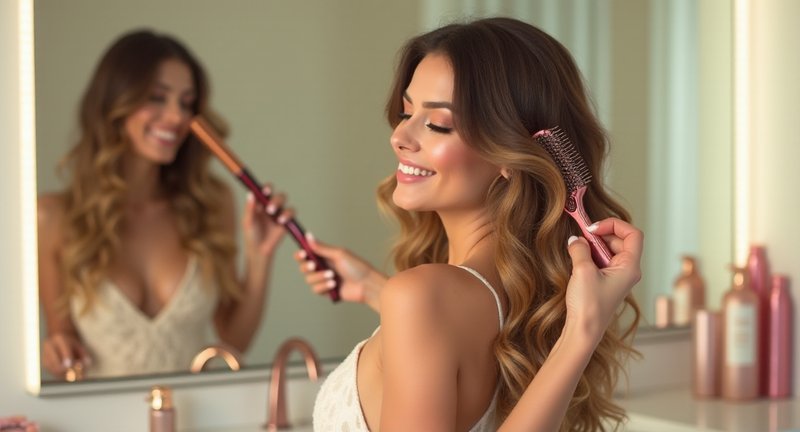
This totally resonates with me! I’ve been fooled before by the allure of a shiny stamp, only to realize the quality wasn’t there. It’s such a great reminder that not everything stamped is valuable. Sometimes, the most beautiful pieces are the ones with no stamp at all!
As someone who’s been duped by ‘too good to be true’ deals before, I totally understand the value of hallmarking now! Those tiny stamps can save you so much hassle and disappointment. I remember buying what I thought was silver, only to find out later it was just silver-plated. Now I always check for the hallmark before purchasing. It’s like a hidden key to trust and quality, and it feels good to know you’re making a smart investment. I’ll definitely be more careful with my next buy!
I had no idea that the number 925 had so much significance beyond just being a random number! It’s fascinating how this percentage of pure silver and added metals strikes a perfect balance between beauty and durability. I actually love wearing silver every day, and this explains why my pieces hold up so well. Also, the idea that 925 has historical roots is just the cherry on top. Learning about this definitely adds a whole new level of appreciation for my jewelry collection.
I never thought of those little metal stamps as ‘secret handshakes’ before, but it makes so much sense! It’s so satisfying to know that something as small as a stamp can carry so much meaning and authenticity. Now every time I wear my favorite ring, I’ll be reminded of the craftsmanship behind it. Such a cool perspective!
You know, I always felt there was something special about the sterling silver pieces in my collection, but I never really understood the depth behind that 92.5% hallmark until now. I love how you described it as a connection to the artisans who craft these pieces. It makes me appreciate the jewelry even more, knowing there’s a whole history and tradition of skilled craftsmanship behind it. Plus, it’s so true that the durability is a game-changer – I have a couple of sterling silver rings that have held up beautifully over the years. And the idea that it holds resale value? That’s a great bonus! Not that I plan on parting with mine anytime soon, but it’s good to know. It really does feel like you’re wearing a piece of history, and now I understand why that mark is so significant. Thanks for sharing your insights!
I completely agree with you about the versatility of sterling silver! It’s one of those metals that just works with every style, from boho to something more polished. The fact that silver marked with that 92.5% stamp is skin-friendly is a HUGE plus for me, because I tend to have sensitivities to other metals. I also never really thought about how having that stamp could affect the value of my jewelry over time, but it makes so much sense. The craftsmanship, quality, and history behind it definitely make it stand out compared to some of the other options out there. Every time I wear one of my sterling silver pieces, I feel like I’m investing in something that has both sentimental and monetary value. Thanks for breaking it down like this – I’ll be looking out for that stamp even more now!
Wow, I never realized how much that tiny 925 stamp actually means! It’s kind of like a hidden code for those in the know. I’ve always been drawn to sterling silver, but now that I understand the craftsmanship and quality behind it, I feel even more connected to my jewelry. It’s interesting that the copper mix actually helps with tarnishing – I used to think pure silver would be better, but this makes so much sense! I’ll definitely be on the lookout for this “badge of honor” next time I shop. It’s like owning a little piece of wearable art, right? There’s something special about wearing jewelry that’s not only beautiful but has a story behind it, too. I’ve got a couple of 925 pieces that I cherish, and now they feel even more meaningful.